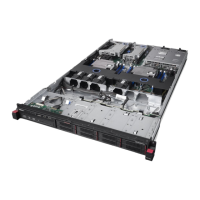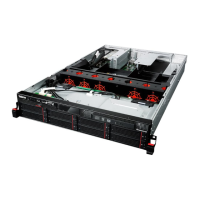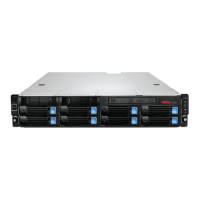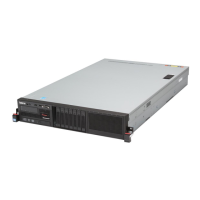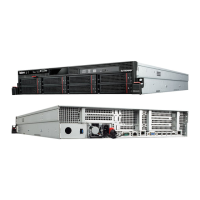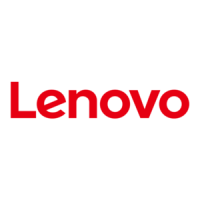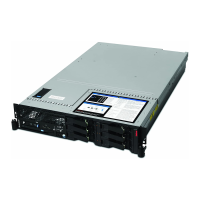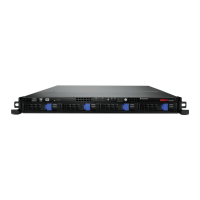Page 34
MegaRAID SAS Software User GuideChapter 2: Introduction to RAID
| RAID Levels
Figure 8: RAID 1 Drive Group
2.5.5 RAID 5 RAID 5 includes disk striping at the block level and parity. Parity is the data’s property of
being odd or even, and parity checking is used to detect errors in the data. In RAID 5,
the parity information is written to all drives. RAID 5 is best suited for networks that
perform a lot of small input/output (I/O) transactions simultaneously.
RAID 5 addresses the bottleneck issue for random I/O operations. Because each drive
contains both data and parity, numerous writes can take place concurrently.
Table9 provides an overview of RAID 5. Figure9 provides a graphic example of a RAID 5
drive group.
Strong Points Provides complete data redundancy. RAID 1 is ideal for any application that
requires fault tolerance and minimal capacity.
Weak Points Requires twice as many drives. Performance is impaired during drive
rebuilds.
Drives 2 through 32 (must be an even number of drives)
Table 8: RAID 1 Overview
Segment 1
Segment 1
Duplicate
Segment 2
Segment 3
Duplicate
Segment 4
Duplicate
Segment 3
Segment 4
Segment 5
Segment 6
Segment 7
Segment 8
Segment 5
Duplicate
Segment 6
Duplicate
Segment 7
Duplicate
Segment 8
Duplicate
Segment 2
Duplicate
...
...
...
...
RAID1
RAID1
RAID1
RAID1
Table 9: RAID 5 Overview
Uses Provides high data throughput, especially for large files. Use RAID 5 for
transaction processing applications because each drive can read and write
independently. If a drive fails, the RAID controller uses the parity drive to
recreate all missing information. Use also for office automation and online
customer service that requires fault tolerance. Use for any application that
has high read request rates but low write request rates.
Strong Points Provides data redundancy, high read rates, and good performance in most
environments. Provides redundancy with lowest loss of capacity.
Weak Points Not well-suited to tasks requiring lot of writes. Suffers more impact if no
cache is used (clustering). Drive performance will be reduced if a drive is
being rebuilt. Environments with few processes do not perform as well
because the RAID overhead is not offset by the performance gains in
handling simultaneous processes.
Drives 3 through 32
